This week we revisit a case from Dr Mazharul Islam, in which a 56-year-old lady presents for a...
.jpg?height=200&name=HCE%20HubSpot%20blog%20images%20600x350%20(32).jpg)
Develop foundation knowledge in cosmetic medicine principles and the safe practice of highly requested aesthetic procedures.
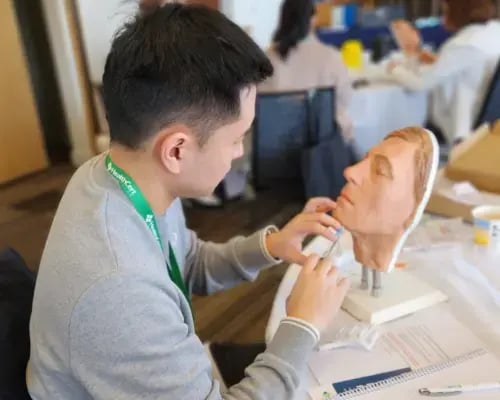
Most aesthetic treatments are safe, quick, and low-cost to deliver, requiring repeated visits with no downtime, minimal side effects, and immediate visible results for your patients – a win-win situation.
- This course is perfect for practitioners with no to little training in aesthetic medicine.
- Learn skin classifications, facial anatomy and anaesthesia, procedure planning, topical skin treatments, and minimally invasive facial rejuvenation.
- This course is for medical doctors, International Medical Graduates, registered nurses, and degree-qualified health professionals.
- The online course is quality-assured by Bond University.
- CPD accredited.
Fulfils 50 hrs for medical professionals in Australia*
100% online
Online + workshop
Fully online: $2595
Online + workshop: from $3695
Special rates available
83 hours
Self-paced
2026
21 March in Brisbane
18 April in Sydney
16 May in Melbourne
1 August in Brisbane
19 September in Sydney
17 October in Melbourne
*provided an outcome measurement activity with a minimum of 5 hours is completed.

- Learn the concepts of aesthetic medicine, facial
and skin classifications. ageing - Confidently plan aesthetic procedures with foundation knowledge in facial anatomy and anaesthesia.
- Be introduced to chemical composition and techniques for the safe practice of wrinkle-relaxant treatment and volumising techniques.
- Add facial aesthetic treatments to your clinic workflow to increase revenue.
Get unlimited access to all course content, additional learning materials, ongoing post-course support, and more.
*These topics are covered during the face-to-face sessions in the optional skills workshop. Find out more about our new-and-improved workshops below and view the workshop program here.
In this module, the concept of aesthetic medicine and the correct approach for patients seeking aesthetic treatments is described. Topics include the history of aesthetic medicine, applying various aesthetic medicine treatment options in a primary care setting, typical aesthetic presentations and how to assess the ageing face. An aesthetic consultation and treatment plan is included.
This module focuses on common aesthetic treatments that can be undertaken in the GP clinic. These include microdermabrasion, percutaneous collagen induction/micro needling, platelet rich plasma therapy (PRP) and photodynamic/low level light (LED) therapy. Each of these treatments are described in detail including the consultation, preparation, considerations, performing the treatment, cautions and drug sensitivity.
This module focuses on identifying specific skin conditions suitable for facial peels and how to evaluate the use of skin conditioning and retinoids in aesthetic medicine. Tools to assess skin conditions are introduced including the classification of photo damage. The wound healing process and understanding of skin anatomy are featured before moving into understanding what a chemical peel is and expected reactions and complications from chemical peels. The module concludes with a detailed description of how to perform a chemical peel.
In this module the different types of laser equipment used in aesthetic medicine and their modes of action are detailed, including what laser machines are uses for particular aesthetic medical conditions. A feature includes understanding vascular conditions and skin pigmentation and introducing how laser treatments can target these conditions. The module then introduces how lasers can be used for hair and tattoo removal.
Understanding facial anatomy is critical for successful aesthetic treatment outcomes. Patient considerations include gender, race, age, medical history including previous facial treatments, face shape and other considerations. There is a detailed focus on the facial sub-units, innervation, vascularization, lymphatics and musculature systems of the face and neck. These areas are crucial when evaluating a patient for safe aesthetic treatments and determining the appropriate treatment modality. The signs and symptoms of potential adverse outcomes are included.
This module describes wrinkle-relaxant treatment, its cosmetic and non-cosmetic uses and available wrinkle-relaxant treatment brands. The molecular structures and modes of operation are detailed. Patient consent and assessment including gender, muscular differences, skin quality, symmetry, history, contraindications and precautions are important considerations for considering the use of wrinkle-relaxant treatment. Determining the best target site, deciding the administration technique and marking out entry points are outlined. Potential issues and complications are explained.
This module outlines why volumising techniques are considered a useful aesthetic medicine option and describes appropriate application areas. Three types of volumising techniques are addressed – temporary, permanent, and biostimulators. Patient assessment includes history, skin ageing and texture and a detailed examination of the patient before developing a treatment plan including product selection. The module also covers contraindications, side effects and how to manage side effects, and complications including granulomas, vascular compromise, infection, and biofilm.
This module outlines the treatment process for volumising techniques including patient assessment, written patient consent, and the importance of photos pre and post treatment. Anaesthesia options, needle choice and a variety of administration techniques are discussed. After treatment care is included for patient information.

Skin Cancer and Aesthetic Medicine Physician, Croxton Medical Centre, Victoria
Principal doctor at Croxton Medical Centre, Dr Chris Clifopoulos established the practice shortly after completing his training as a resident doctor in St. Vincent’s Hospital, Melbourne. He then obtained his equivalent qualification in Athens. Chris obtained his First Part qualification training for the Royal Australasian College of Dermatology in 1995. He also completed a postgraduate diploma of Epidemiology and Biostatistics in 1997 at the University of Melbourne. He completed his Master of Skin Cancer Medicine through The University of Queensland in 2011.

Doctor at National Skin Cancer Centres, New Town
Additional qualifications: MMed (Skin Cancer), Dip. Aesthetic Medicine (AAAM)
Dr Dianne King has been working as a family GP for over 20 years, a graduate from UTAS medical school in 1989.
She has had a keen interest in dermatology throughout this time and obtained her DPD in Cardiff while working in the UK during the early part of her career.
In the last 18 years, she has subspecialised in skin cancer medicine and surgery, obtaining her Masters of Medicine in Skin Cancer from UQ in 2010.
Di established one of the first standalone skin cancer clinics in Hobart with her business partners in 2009, and in recent years has undergone further training in aesthetic medicine. This has proven to be great adjunct to her skin cancer practice, evolving into a business model of the “one stop skin shop” where everything from skin cancer diagnosis and treatment, phototherapy for aesthetic and dermatological conditions, and various cosmetic treatments are available. Di has been actively involved as a guest lecturer for UTAS medical students in skin cancer for the past 10 years.
In her “spare” time, Di also lectures for HealthCert in the recently developed Aesthetic Medicine courses aimed at primary care and skin cancer physicians.

Aesthetic Medicine Physician and Medical Director at Southern Cosmetics, Victoria
Fellow of the Cosmetic Physicians College of Australasia
HealthCert Course Chair for Aesthetic Medicine
Dr Jenny Kimmins spent many years in General Practice before developing an interest in management and treatment of skin conditions. She has over 10 years’ experience in cosmetic medicine, including the management of acne and rosacea, laser skin treatments, dermal fillers and anti-wrinkle injections. She is a lecturer and trainer in aesthetic medicine and injectable cosmetic treatments. Jenny completed a postgraduate Diploma in Dermatology with the Australian Institute of Dermatology and is a trained skin cancer physician with a special interest in sun-damaged skin. She was recently awarded a Fellowship of the Cosmetic Physicians College of Australasia.

Aesthetic Medicine Physician and Medical Director at Southern Cosmetics
Skin Cancer Physician and Medical Director at Bluff Road Medical Centre
Member of Skin Cancer Society of Australia
Post graduate Certificate in Skin Cancer
Dr Nicholas Kokotis spent five years training in various hospitals before commencing general practice, working in Tasmania and north Queensland. In 2000, he started the first skin cancer clinic in Cairns and performed thousands of procedures on the sun damaged population of far north Queensland.
In 2007, Nick returned to Bluff Road Medical Centre in Melbourne. His patients sought cosmetic advice and Nick teamed with Dr Jenny Kimmins to form Southern Cosmetics in 2012. Nick’s interests are in the treatment of sun damaged skin using lasers and energy-based devices. Nick has developed expertise in laser treatments, treating skin cancers, pre-cancerous skin, vascular conditions and other cosmetic conditions. He enjoys teaching registrars and other healthcare professionals about skin cancer and the use of medical and aesthetic lasers.
*Note: The workshop component is an optional self-submitted CPD activity and is not university reviewed.
Our Aesthetic Medicine workshops have had a refresh!
New format. More hands-on. Same trusted presenters.
We have trimmed the theory, streamlined demonstrations, and built in more hands-on practice —
making these our most practical Aesthetic Medicine workshops yet.
WHAT'S NEW?
💉 90 minutes of hands-on injecting included in every workshop.
💡 Less theory, more time for hands-on practice — just as you asked.
🎓 A more focused, technique-based format designed for real clinical application.
If you have joined us before, now is the time to return and experience the difference!
from $2595
*provided an outcome measurement activity with a minimum of 5 hours is completed.
Bundle two courses and save 5%, or three courses and save 10% upon enrolment.
Talk to us about deferred payment options, registrar scholarships and special rates.
*For Australian residents only: Online course prices are shown exclusive of GST. If you are GST-registered, please enter a valid ABN at checkout to ensure GST is not applied. Otherwise, 10% GST will be added at checkout. View our FAQ for more information.
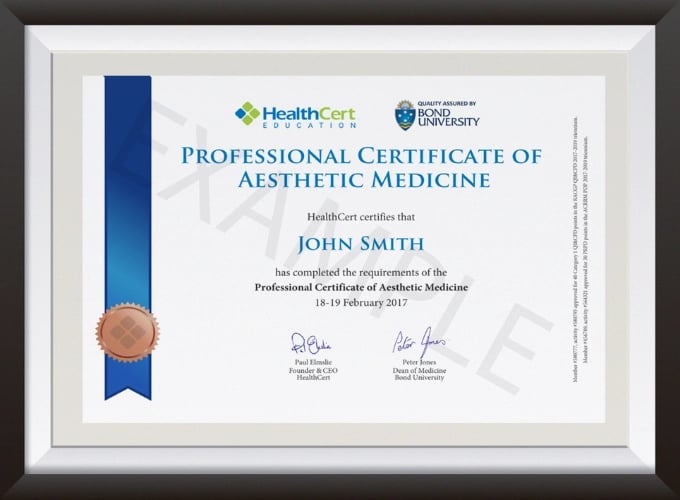

Excellent course! I did not have any experience in this field and didn't know how to address my patients’ demands regarding these issues.
Dr A. Irannezhad
The course provides education on conditions and treatments that have not yet become part of general medical training but are very important in the everyday lifestyle of a wide variety of patients.
Dr B. Thomson
The Professional Certificate of Aesthetic Medicine was a wonderful experience and I will definitely inculcate my learning into my future practice. The course is very useful in general practice for anyone interested in aesthetic medicine.
Dr N. Ahmed
The course provided good coverage of all areas I have already researched exclusively. The live demonstrations have cleared up some uncertainties I had and I now feel ready to add more aesthetic procedures to my practice.
Dr D. Pratt
Very enjoyable weekend. Lots of information to cater for a variety of needs, from GPs starting out in the field through to GPs practising and expanding their spectrum of knowledge.
Dr J. Petro
| RACGP Activity Number | ACRRM Activity Number | Activity Title | Education Hours | Performance Hours | Outcome Hours | ||
|---|---|---|---|---|---|---|---|
| 451728 | 31119 | Facial anatomy and planning safe treatments | 451728 | 31119 | 7 | 5 | 0 |
| 451515 | 31116 | Office based aesthetic treatments | 451515 | 31116 | 6 | 5 | 0 |
| 451502 | 31115 | Introduction to Aesthetic Medicine | 451502 | 31115 | 5.5 | 5 | 0 |
| 451523 | 31117 | Introduction to chemical peels | 451523 | 31117 | 4.5 | 5 | 0 |
| 451736 | 31121 | Introduction to volumiser techniques and rheology | 451736 | 31121 | 4 | 5 | 0 |
| 451743 | 31122 | Introduction to volumising techniques | 451743 | 31122 | 5 | 5 | 0 |
| 451732 | 31120 | Introduction to wrinkle-relaxant treatment | 451732 | 31120 | 6 | 5 | 0 |
| 451719 | 31118 | Introduction to lasers | 451719 | 31118 | 5 | 5 | 0 |
| 802689 | 32989 | Wrinkle-relaxant treatment: Outcome Improvement Activity | 802689 | 32989 | 0 | 0 | 8.5 |
| Total hours | 43 | 40 | 8.5 | ||||
Note: The workshop component is an optional self-submitted CPD activity and is not university reviewed.
The purpose of outcome measurement activities is to improve your clinical confidence in managing an identified learning gap. Outcome measurement activities are not a requirement of our Professional Certificate of Advanced Certificate courses; they are a requirement for Australian CPD purposes.
HealthCert Education provides a variety of outcome measurements activities to suit your needs:
The Professional Certificate of Aesthetic Medicine is tailored for medical professionals with an interest in the science of aesthetic medicine and who wish to grow their practice in that area. Participants can expect to develop solid foundation knowledge in the safe practice of highly requested aesthetic treatments for clinical conditions, thus meeting the increasing demand for skin repair services in primary care.
The course is suitable for physicians, nurse practitioners and degree-qualified nurses who are registered with AHPRA, and assumes no prior knowledge or training in the field. Participants do not have to pass an IELTS test but, as the courses are delivered in English, proficiency in listening, reading and writing in English is assumed.
As the optional practical workshop of the Professional Certificate of Aesthetic Medicine includes hands-on training on real-life patients, participants must be AHPRA registered medical practitioners. Cosmetic injections are Schedule 4 medications and the Department of Health/TGA regulations must be adhered to for prescribing, administering and advertising. Cosmetic injectable products can only be prescribed and administered by a Medical Doctor or Nurse Practitioner working under the supervision of a medical doctor.
Professionally recognised qualifications and prior studies may be recognised for entry into this course if the learning outcomes match exactly. Please ask a HealthCert Education Advisor for an individual assessment of your prior qualifications and experience.
Professionally accredited qualifications and prior studies may be recognised for entry into this course. Please send an email to credit@healthcert.com for an individual assessment of your prior qualifications and experience.
This email should contain information about your educational history and work experience that specifically pertain to the content and procedures covered in the course.
Please include any applicable certificates and course outlines from previous education. The relevant Course Chair will make a determination on your application within two to three weeks.
This certificate course meets the minimum 50 hours CPD annual requirement across all three mandatory CPD activity types, provided an outcome measurement activity with a minimum of five hours is completed. You may use an optional HealthCert outcome measurement activity or develop your own.
Outcome measurement activities are not a requirement of Professional or Advanced Certificates.
Upon successful completion of the course requirements, course participants will receive the Professional Certificate
This certificate course:
To learn more about the delivery of certificates in Australia and overseas, please visit our FAQs.
Professional Diploma Pathway
This course is the first stage of the diploma pathway. The full pathway is the Professional Certificate of Aesthetic Medicine, the Advanced Certificate of Aesthetic Medicine, and the Professional Diploma of Aesthetic Medicine.
Postgraduate Pathway for Aesthetic Medicine awarded by the University of South Wales
This pathway is suitable for doctors who are mainly interested in clinical academic study. The Postgraduate Diploma and Master of Science in Cosmetic Medicine is studied entirely online through Diploma MSc and awarded by the University of South Wales (UK). Medical professionals who successfully complete the HealthCert Professional Certificate, Advanced Certificate and Professional Diploma of Aesthetic Medicine will be eligible to apply for Recognition of Prior Learning (RPL) for module 1 of the Postgraduate Diploma of Cosmetic Medicine which will save them time and fees. When the Postgraduate Diploma has been successfully completed, doctors can apply for credit towards the MSc in Cosmetic Medicine awarded by the University of South Wales. Please apply directly here.
Certified Clinical Attachments Pathway
Clinical attachments are optional and available on a 1:1 basis. These provide the opportunity to observe aesthetic medicine and ask questions of the expert performing the procedures. HealthCert certificates are awarded for participating in clinical attachments. Many doctors find this a very valuable learning experience.
This organisation is an RACGP-accredited CPD provider under the RACGP CPD Program.
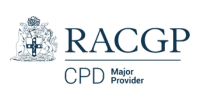
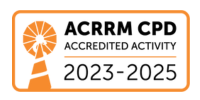

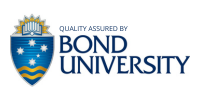
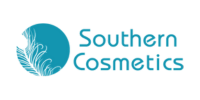
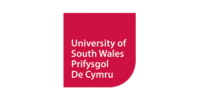
Don't see your question? Explore other faqs or talk to us.
Fees will vary based on the program and study option selected (fully online vs online + optional practical workshop). Payments can be made upfront or in monthly instalments. Special rates and various payment options are available. GP registrars and doctors in training enjoy a scholarship of up to $500. Talk to us to learn more.
Completion of any HealthCert course or attendance at an event will enable you to access the HealthCert Alumni Program which includes:
HealthCert Education is pleased to issue digital credentials for alumni. Digital credentials are a permanent online record of your successful completion of a HealthCert course and are issued to all course participants in addition to PDF certificates. If you are based in Australia, you also have the option to order a hard copy of your digital certificate for a small additional fee.
The recommended study duration of this certificate course is 83 hours, which includes study of the pre-course activities and readings, online lectures, live tutorials, and online assessment. This self-paced course offers the flexibility of 100% online study in your own time, at your own pace, in your own home or office, with no mandatory face-to-face requirements. You are not required to be online at specific times but can view and replay video lectures at your convenience.
All HealthCert courses meet World Federation of Medical Education standards. This certificate course qualifies for CPD hours from the Royal Australian College of General Practitioners (RACGP) and the Australian College of Rural and Remote Medicine (ACRRM) in Australia. It is recognised by the Royal New Zealand College of General Practitioners (RNZCGP) in New Zealand. It is recognised by the Hong Kong College of Family Physicians (HKCFP) in China. It is a self-submitted activity in Dubai and the United Kingdom. It is a self-submitted activity through the College of Family Physicians in Canada. If you live or work outside one of the above-mentioned countries, please contact us on admin@healthcert.com to discuss whether this course can be recognised in your country.
Want to stay up-to-date with the latest case studies, podcasts, free video tutorials and medical research articles pertinent to primary care?
Our Education Advisors can assist you with any queries and tailor our education pathway to suit your current expertise, interests and career goals.